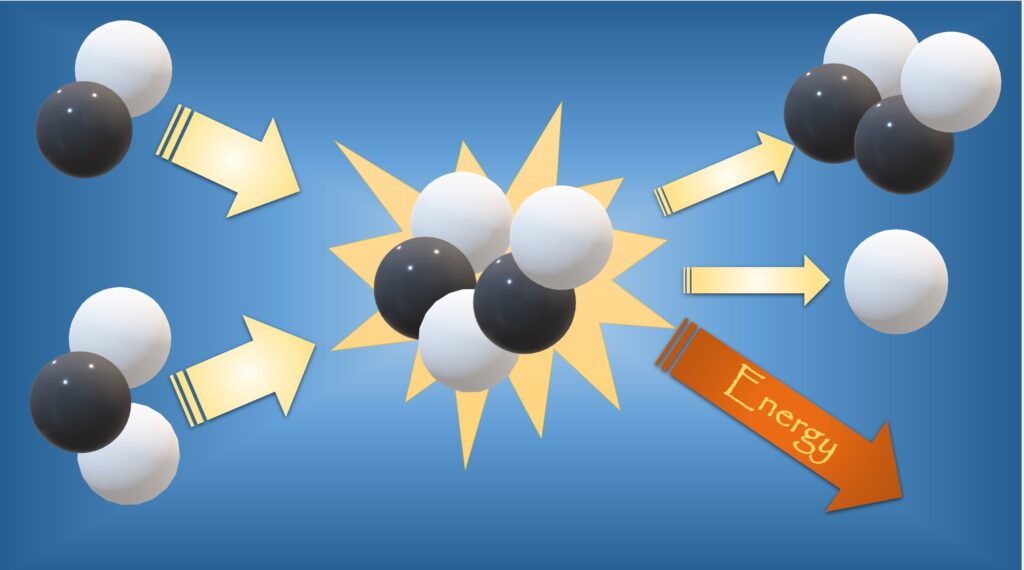By Lynn Grinnell
Great news for climate catastrophists and climate deniers alike! I was excited to read last week that, for the first time ever, researchers have been able to conduct a controlled fusion reaction that produced more energy than the energy used to create it. On December 5th, Lawrence Livermore National Laboratory made this breakthrough after decades of being on the cusp of this discovery.
Fusion energy is an exciting and potentially game-changing technology that has the potential to revolutionize the way we generate electricity. Fusion has the potential to be a highly sustainable energy source because it produces no harmful emissions and can be fueled by hydrogen, the most abundant element in the universe. By harnessing the power of fusion reactions, we could have access to a virtually limitless supply of clean, emissions-free energy for generations to come.
While fusion technology is still in the early stages of development, we have made significant progress in understanding the science behind fusion reactions and developing technologies to contain and sustain them. Scientists and engineers are working hard to overcome the technical challenges and bring fusion energy to market as soon as possible.
It is clear that this has the potential to be a highly sustainable and reliable energy source. If successful, fusion could help to address the global challenge of climate change and provide a cleaner, more sustainable future for all.
In a fusion reaction, two light atoms are fused together to form a heavier atom, releasing a large amount of energy in the process. The fusion process uses hydrogen atoms that are abundantly available in seawater. [1] This energy can be harnessed to generate electricity, just like in a traditional power plant. However, unlike fossil fuels, which release carbon dioxide and other pollutants when burned, fusion reactions do not produce any harmful emissions. This means that fusion has the potential to provide clean, emissions-free power for generations to come.
One of the main benefits of fusion as a sustainable energy source is its ability to produce power without generating greenhouse gases or other harmful emissions. In a fusion reaction, two light atoms are fused together to form a heavier atom, releasing a large amount of energy in the process. This energy is harnessed to generate electricity, just like in a traditional power plant. However, unlike fossil fuels, which release carbon dioxide and other pollutants when burned, fusion reactions do not produce any harmful emissions. What’s even more exciting – nuclear fusion does not generate highly radioactive nuclear waste like current nuclear fission plants do, and there is no danger of radioactive accidents or terrorists acquiring bomb materials. [2] For all who are gravely concerned with climate change, this has enormous promise to be a path forward to a more sustainable future without devolving technologically advanced civilizations nor depriving the developing world from having their turn at prosperity.
Another advantage of fusion is its potential for providing virtually limitless power. Fusion reactions can be fueled by hydrogen, which is the most abundant element in the universe. This means that, in theory, fusion could provide a virtually limitless supply of clean energy for generations to come. For those concerned with our headlong pursuit of less reliable forms of renewable energy (i.e., huge wind and solar farms) that have significant impacts on land, flora, and fauna where they’re being built, this is a welcome alternative.

Image from Amazon, JADA TOYS, Back to The Future Part III: Time Machine with Light-up 1:24 Scale Vehicle.
Achieving practical, sustained fusion reactions is still a challenging task. We’re not likely to be powering our cars with Mr. Fusion, like Dr. Brown did in Back to the Future. Scientists and engineers are now working to develop fusion technologies that can be used at scale to generate electricity. One promising approach used by Lawrence Livermore in this recent breakthrough uses hundreds of lasers that vaporize the two hydrogen isotopes used in the process, releasing huge amounts of energy.
Some experts believe that fusion energy could be available within the next few decades – some even believe it is possible within a decade if we take a “Manhattan Project” approach – while others believe it could take longer. However, significant progress is being made, and it is likely that fusion energy will be a viable option in the relatively near future. Hurray!
Note: Includes both hardcover and Kindle versions
References
[1] and [2] Nuclear Fusion Breakthrough: The Future Of Clean, Limitless Energy. See Nuclear Fusion Breakthrough: The Future Of Clean, Limitless Energy (forbes.com)

